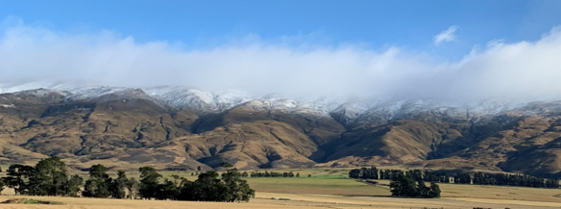Freshwater Farm Plans are a key part of the New Zealand Government’s wider Essential Freshwater reforms, aiming to protect and improve freshwater quality and ecosystems.
The Freshwater Farm Plan regulations require farms over a certain size to get a certified and audited freshwater farm plan.
The roll out of this requirement and supporting system is being phased in a few regions at a time, starting on 1 August in Southland and Waikato.
Otago, the West Coast and Manawatu are listed in the second phase of the roll-out which is expected to begin early next year, with the requirement for plan development to be phased in region-wide over the following 18-months.
For Otago, the phasing is likely to follow the boundaries of the ORC’s existing five Freshwater Management Units (FMU)/rohe areas, beginning with North Otago.
ORC’s Acting General Manager Regulatory Joanna Gilroy says the cornerstone of the Freshwater Farm Plans (FWFPs) is to support and focus on-farm actions to address any impacts on freshwater, wetlands and eco-systems.
“The plans will be property-specific and give farmers the flexibility to find the right solutions for their farm and catchment area,” she says.
Outline of FWFPs for farmers
All pastoral or arable land of more than 20 hectares will require a Freshwater Farm Plan, as will all horticultural land of 5 hectares or more.
FWFPs must include maps identifying waterways and wetlands, any contaminant discharges, any risks to freshwater and freshwater ecosystems from activities such as irrigation, nutrient application, effluent, winter grazing, stock-holding areas, stock exclusion, offal pits or farm landfills.
Ms Gilroy says in the plan there must be a schedule of actions to manage features and address the identified environmental risks.

Over time FWFPs are expected to become an important tool for farmers and growers to manage all on-farm freshwater regulatory requirements, she says.
Proposed Otago roll-out
The proposed Otago roll-out is presently with the Ministry for the Environment (MfE), with North Otago expected to be first to get underway.
“We’re keen to start this great work with our communities and are waiting to see how things land for Otago.” Ms Gilroy says.
MfE expects about 34,500 Freshwater Farm Plans to be in place across the country eventually.
“Many of our farmers, industry professionals, growers, and catchment groups are leading the way in global farming practices, including local actions to support and enhance the health of our waterways, land and wetlands.”
“We know people are looking at ways to continue to look after the environment and farm plans support this in a targeted and site-specific way,” she says.
“The aim of the regulations is to build on the great work already being done to date, including with existing plans,” she says.
ORC supporting implementation
“ORC and its staff are here to fully support this implementation. In the months ahead and through next year we will have staff available to help and are proposing to run workshops and one-on-one
meetings with farmers,” she says.
Ms Gilroy says ORC will be working closely with sector groups, iwi, farmers and industry on the implementation of these regulations.
She notes that during the development and consultation on the Government’s Freshwater Package, over 2018-19, the agricultural sector suggested freshwater farm plans to deal with regulatory compliance and to achieve environmental outcomes.
“The freshwater farm plans will be flexible because one size will not fit all. It’s about applying the best available information and risk mitigation at the farm level in the context of the needs of the surrounding catchment,” she says.
Understanding and implementing Government reforms
Ms Gilroy notes councils and rural communities are feeling the pressure of understanding and implementing many Government reforms in the freshwater space.
“We need to implement this national legislation to achieve great outcomes for our environment, and to do this we need to support our communities.” she says.
She highlighted that New Zealand’s food production is dependent on freshwater.
Freshwater Farm Plans cover on-farm actions which will be tailored to the individual farming or growing enterprise and the farm’s unique surrounding environment, which will then need to be certified and audited.
Once certified and audited, the plans will need to be recertified no later than 5 years after the plan was last certified.
“The Freshwater Farm Plans will build on the work which many farmers are already doing to identify and reduce the risks of farming activities on freshwater and ecosystems,” Ms Gilroy says.
ORC will provide the relevant catchment information; context, challenges and values which farm operators will need to develop freshwater farm plans across the region, she says.
Over time, the Freshwater Farm Plans are expected to become an important tool for farmers and growers to manage all their on-farm freshwater regulatory requirements, she says.
Background to Freshwater Farm Plans
Freshwater Farm Plans were introduced as part of the Government’s Freshwater Package in 2020 and are a legal instrument established under Part 9A of the Resource Management Act. The regulations supporting this plan were gazetted in early-June 2023 and come into force from 1 August 2023; with a phased rollout across the country over the following 18-months.
The Freshwater Farm Plans Regulations published on 19 June 2023:
Resource Management (Freshwater Farm Plans) Regulations 2023 (SL 2023/113) – New Zealand Legislation
